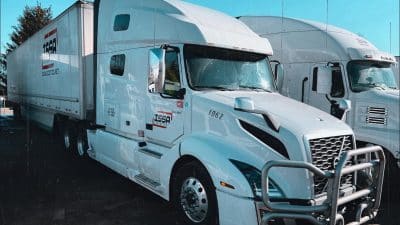When it comes to purchasing a Transportation Management System (TMS), involving the right stakeholders from various departments is crucial for the success of the implementation. Each role brings a unique perspective and expertise, contributing to a comprehensive understanding of the organization’s needs and challenges. While it might seem efficient to keep the decision-making process limited to a specific team, the advantages of involving a diverse group of stakeholders are numerous.
In this blog post, we will explore the key roles that should be involved in the TMS purchase process and highlight the benefits of their participation.
1. Owner or President:
- Role: The owner or top management of smaller businesses plays a pivotal role in decision-making.
- Responsibilities: Setting the overall budget, understanding the strategic goals, and ensuring alignment with the company’s vision.
- Benefits of Involvement:
Strategic Alignment: Involving the owner ensures that the TMS aligns with the long-term vision and growth objectives of the business.
Informed Decision-Making: Comprehensive insights from diverse stakeholders empower the owner to make well-informed decisions that resonate with the broader business strategy.
2. Accounting Director or Decision-Maker from Finance:
- Role: As a key user, the Accounting Director is instrumental in leveraging PCS TMS for Carriers to enhance financial processes.
- Responsibilities: Utilizing the system to expedite driver payroll, assessing profitability based on trucks, routes, or customers, and streamlining the invoicing process.
- Benefits of Involvement:
Financial Feasibility: Assessing the cost-effectiveness of the TMS ensures that the financial director can allocate budget efficiently and derive maximum ROI.
Time Savings: Leveraging a TMS like PCS can streamline payroll, profitability analysis, and invoicing processes, saving valuable time for financial teams.
Download Our Free Guide & Get Everyone Onboard!
Our “Getting from RFP to ‘Yes’ in 10 Easy Steps” guide streamlines the process and secures stakeholder approval for your new TMS.
3. Transportation Dispatcher:
- Role: In charge of day-to-day coordination and management of transportation activities.
- Responsibilities: Scheduling, routing, and tracking shipments to ensure timely deliveries.
- Benefits of Involvement:
Real-Time Operational Efficiency: Actively involving dispatchers ensures that the TMS meets real-time operational needs, optimizing scheduling, routing, and tracking for efficient transportation management.
Reduced Workload: Automation and improved processes can alleviate the daily workload, allowing dispatchers to focus on strategic decision-making.
4. Logistics or Operations Director:
- Role: Overseeing the entire logistics and operations function.
- Responsibilities: Streamlining processes, optimizing efficiency, and ensuring overall logistics strategy alignment.
- Benefits of Involvement:
Strategic Alignment: Ensures the TMS aligns with broader operational goals, contributing to overall logistics strategy.
Efficiency Gains: Optimization of logistics processes leads to increased efficiency, reducing costs, and enhancing overall operational performance.
5. Route Planner or Logistics Coordinator:
- Role: Focuses on optimizing routes for efficient and cost-effective transportation.
- Responsibilities: Planning routes, minimizing fuel costs, and maximizing vehicle utilization.
- Benefits of Involvement:
Practical Insights: Involving route planners ensures that the TMS meets the practical needs of optimizing routes, minimizing fuel costs, and maximizing vehicle utilization.
Operational Efficiency: The TMS can enhance day-to-day operations, making route planning more efficient and effective.
6. IT:
- Role: Handles the technical aspects of TMS implementation, including integration with existing systems.
- Responsibilities: Assessing technical requirements, ensuring compatibility, and managing the implementation process.
- Benefits of Involvement:
Seamless Integration: Involving IT professionals ensures that the TMS seamlessly integrates with existing systems, minimizing technical challenges during implementation.
Future-Proofing: IT can assess the scalability and compatibility of the TMS, future-proofing the organization against evolving technological needs.
Benefits of Involving Multiple Stakeholders in Initial Meetings and Demos:
- Comprehensive Understanding: Involving stakeholders from different departments ensures a holistic understanding of organizational needs and challenges. Sometimes, leadership may not fully comprehend the day-to-day challenges each department faces. Including various stakeholders facilitates a more nuanced understanding, bridging the gap between leadership and operational realities.
- Increased Buy-In: When individuals from various departments are part of the decision-making process, there is a higher likelihood of buy-in from all stakeholders, leading to smoother implementation. This inclusivity ensures that the chosen TMS is embraced by all levels of the organization, fostering a sense of ownership and commitment.
- Identifying Cross-Departmental Challenges: Issues that one department might face with the current transportation system may not be apparent to others. Involving diverse stakeholders helps uncover challenges and find solutions collaboratively. This cross-pollination of insights is essential in addressing interconnected challenges that may otherwise go unnoticed.
- Realistic Expectations: Different departments may have different expectations from a TMS. Involving them early ensures that expectations are realistic and aligned with the capabilities of the chosen system. Moreover, including stakeholders helps manage expectations and educates each department about the potential benefits and limitations of the TMS.
- Efficient Problem-Solving: Cross-functional collaboration allows for more efficient problem-solving during the selection and implementation phases, reducing the risk of overlooking critical aspects. By bringing together individuals with diverse expertise, organizations can anticipate and address challenges more effectively, ensuring a smoother transition to the new TMS.
In conclusion, the success of a TMS implementation depends on the collective expertise and insights of various stakeholders. Involving others in the TMS decision-making process enhances the overall success of implementation. It brings specific benefits to each role involved, bridging leadership and operational teams and fostering a collaborative environment where challenges are surfaced, understood, and collectively addressed.



